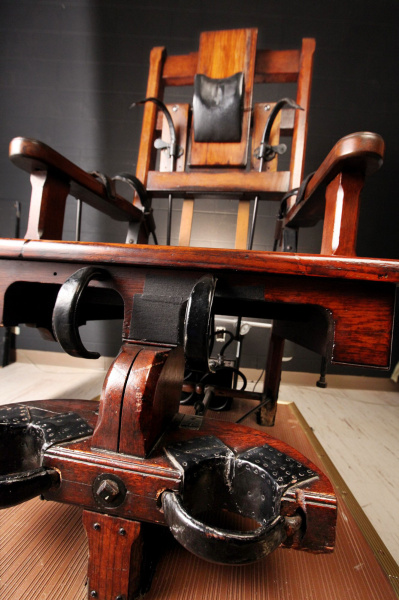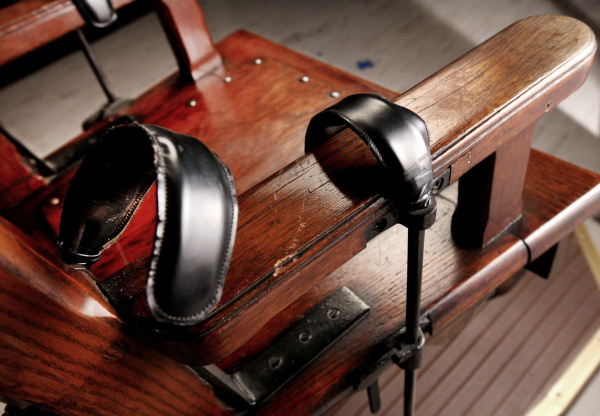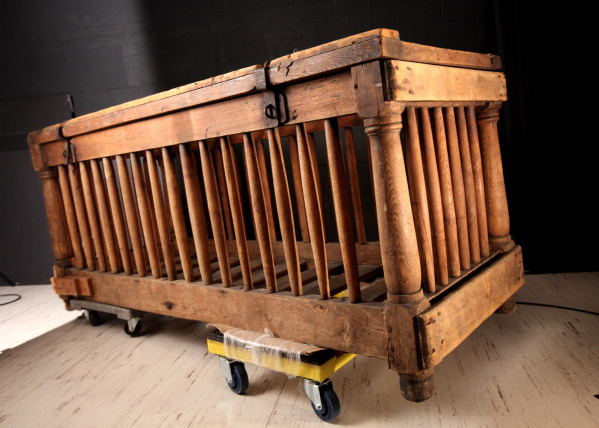





The chair will be part of an exhibit entitled "Controversy: Pieces You Don't Normally See," set to run April 1 through Nov. 20 in the center, at 17th Avenue and I-71.
Also in the exhibit: a wooden cage used in the late 1800s to restrain patients at Ohio mental institutions, a Ku Klux Klan hood and robe from the 1920s, a 150-year-old sheepskin condom, and an aluminum "thumb mitt" used around 1900 to prevent children from sucking their thumbs.
The underlying theme of exhibit: control.
"Controversy" is a risk for the Ohio Historical Society, which typically opts for more traditional exhibitions.
"We think this exhibit will capture the public attention and public interest," said Burt Logan, executive director. "History has a good side, which we often remember, and another side that we don't often see.
"We are not taking a stand of any type with this collection. These items represent part of the history of Ohio. It's purely an educational issue."
The electric chair - last used in 1963 and removed from the Southern Ohio Correctional Facility near Lucasville in 2002 - is the most recognizable object.
The chair replaced hanging in 1897 as Ohio's method of execution. William Haas, 17, from Hamilton County, was the first to die in the hand-fashioned wood-and-steel chair; Donald Reinbolt, 29, of Columbus, was the last to be electrocuted, on March 15, 1963.
The electric chair was replaced by lethal injection as the state's sole means of execution in 2001. It was donated to the Ohio Historical Society in 2002 and has been in storage since.
Up close, the chair shows ominous signs of 66 years as the machinery of death. The wooden arms, gripped by hands of the condemned, and the cushioned headrest are well-worn. But the leather bands that circled prisoners' wrists and metal ones that bound their ankles look like new.
The chair was once the highlight of paid tours of the old Ohio Penitentiary in Columbus. The prison sold postcards of the electric chair and souvenir pictures of the condemned men. Tours were discontinued about 1931.
Visitors will not be allowed to sit in or touch the chair or other items in the collection.
While less well-known, the rest of the exhibit may resonate emotionally with visitors.
The locking wooden cage, euphemistically known as a "crib bed," was used at Longview State Hospital in Cincinnati. Similar devices were used at other state institutions.
The condom was found in the 1860 diary of a steamboat captain.
Sharon E. Dean, director of museum and library services, said the "objects, in and of themselves, are neutral. ... We give objects meaning by projecting our own memories, emotions or prejudices onto them."
The items will be presented in a stark format, without descriptive or explanatory information until the end. "Controversy" is designed by Howard+Revis Design, of Washington, D.C. The firm's previous projects include the September 11th Memorial, the National Museum of the American Indian, and U.S. Holocaust Memorial Museum.
A discussion series, "Community Conversations," has been scheduled to give people a chance to talk about the exhibit.
Admission is open to those 18 and over, and children who are accompanied by adults. The center staff will be on hand to check IDs, historical society spokeswoman Kim Schutte said.
There is a special $5 charge for the exhibit in addition to the standard $8 adult admission fee.
Historical Society members must pay the $5 charge, but not the regular admission.
ajohnson@dispatch.com